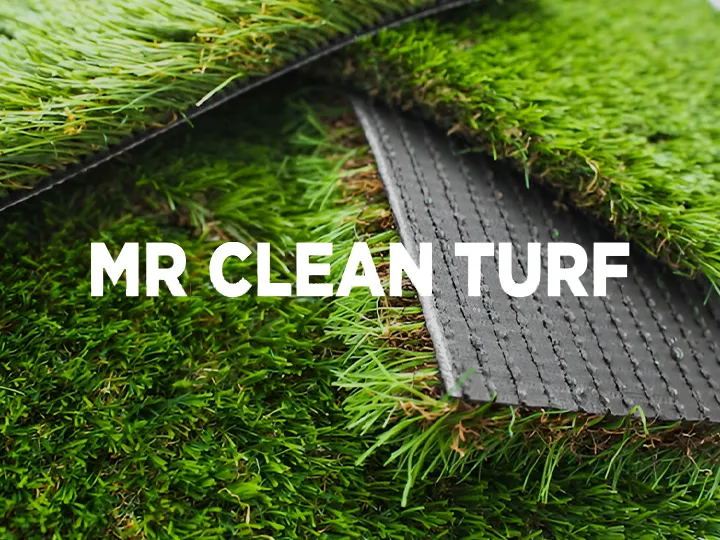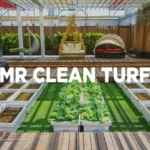How to Choose The Best Putting Green Turf: Buyer’s Guide
The selection process for putting green turf depends on assessing these four characteristics: material durability, pile height, density, and environmental adaptability of the turf. Short pile heights combined with high-density turf structures provide both superior ball movement and long-term material durability over time. Polypropylene and nylon materials serve as excellent examples of these properties in turf systems.
Your assessment should include the viewing of drainage efficiency as well as the ability of the turf to withstand weather and its ease of maintenance to achieve long-term performance. Important characteristics will guide your decision to build an indoor facility or develop an outdoor space.
This complete guide delivers all essential information about selecting ideal putting surfaces according to your specifications and available budget, and dimensions.
Understanding Putting Green Turf Basics
Putting green turf installation operates on a completely different basis from regular artificial grass setups. The surface has intentional features that generate regular ball movement while delivering genuine golf putting quality. The difference between standard artificial grass lies in the fact that putting green turf contains closely packed short fibers that duplicate the playing characteristics of real golf courses. Specialized construction of golf balls allows them to roll with predictable results, thus improving the effectiveness of your practice time.
Modern homeowners have begun putting in indoor putting greens, which create permanent practice areas that enable golf progress throughout every season of any weather condition. Experts use either straightforward putting mats or complete and elaborate installations of green systems to turn an area like extra rooms or basements into full-fledged golf practice facilities.
Different Types of Putting Green Turf Materials
During the purchase of putting green turf, you will find different materials that provide specific advantages and properties.
Nylon Turf
Stands out due to its superb durability and resiliency because it keeps its form under intense usage, thus providing excellent performance. The material offers a steady ball roll alongside a firm surface texture for users to stand on. The long service life of this material suits busy locations, but its expense remains a concern for potential buyers.
Polypropylene Turf
The lower-cost alternative of polypropylene turf produces a touch similar to organic grass together with a better tactile experience. Casual golfers get good value from polypropylene turf because it can be custom-made for desired roll characteristics and retains sufficient durability to perform well.
Polyethylene Turf
The soft texture of polyethylene turf requires greater infill amounts to ensure well-kept ball roll performance. This material exists between polypropylene and nylon with regard to both cost effectiveness and durability levels.
A paver installation around your putting green will create visual appeal and function as a useful area bridging your lawn with your practice surface.
Key Features to Look for in Quality Putting Green Turf
The time-tested performance of putting green turf strongly depends on its fiber type selection. Putting surfaces with professional-grade quality use 100% nylon materials to achieve both high-end durability and extended lifespan. To choose between diverse putting green turf materials, evaluate the following aspects:
- Fiber Material: The most enduring fiber material is nylon, though it costs more than other options. Despite its reasonable price point, polypropylene offers excellent performance quality.
- Fiber Construction: A dense fiber architecture works to stop golf ball bounce and creates a surface that remains perfectly smooth.
- Weather Resistance: Choose turf made with fibers that have UV protection since it prevents fading and degradation under sunlight.
You need to clean your turf regularly for both improved performance and a better overall appearance of your putting green. Extended turf lifetime along with consistent ball roll happens when you remove turf debris along with leaves and dust from your playing surface.
Pile Height and Density
Your putting green function depends mainly on the height of the pile fibers and how tightly these fibers are packed together. To achieve the optimum putting performance, choose items with the following characteristics:
- Ideal Pile Height: Between 1/2 and 3/4 for a fast, predictable ball roll.
- Density: The level of density in the grass material leads to superior performance while lasting longer.
- Resilient Compression: The turf must regain its shape after receiving any form of compressive pressure.
The speed of your green depends on pile height because shorter piles create surfaces that mirror professional greens, yet longer fibers create intermediate speeds, which beginners tend to prefer.
Durability and Weather Resistance
For an excellent putting green, it must successfully endure both typical usage and exposure to weather variations. Top-tier choosing options for putting green should comprise these essential elements:
- UV Protection: The presence of UV protectant safeguards the materials against both fading and sun-related breakdown.
- Drainage Capability: Drainage systems must have proper capabilities to stop the formation of water pools that could result in damage.
- Freeze-Thaw Resistance: Important for regions with cold winters.
Commercial providers prioritize installing durable putting greens for intense use and variable weather, which serves as a good reference for durability standards research.
Choosing the Right Putting Green for Your Space
A home-based putting green provides constant access to practice golf during every season and in all kinds of weather conditions. Your plan for an indoor green must include the following aspects:
- Available Space: Measure the available space before selecting from the available green sizes.
- Ceiling Height: The ceiling should have adequate space to perform the entire putting swing.
- Lighting: The correct intensity of illumination forms an essential aspect in attaining realistic practice conditions.
- Flooring Protection: Before installing the putting surface, think about how to shield your current flooring area beneath.
The distraction-free environment of indoor putting greens enables golfers to focus on developing their putting technique. Indoor putting greens act as special entertainment elements that elevate house parties with visitors and relatives.
Backyard Putting Green Planning
Your property receives advantages from backyard putting greens that also offer practical practice areas. Key planning considerations include:
- Sun Exposure: Study how sunlight interacts with the location during all daylight hours.
- Terrain: Select a terrain that has no more than a 3% slope with a flat configuration.
- Accessibility: Consider proximity to your home and other outdoor living spaces.
- Irrigation: The system for irrigation needs sufficient planning to prevent water damage.
Site preparation for a backyard putting green demands attention to grading techniques followed by base construction and choosing appropriate turf. The investment provides two benefits to homeowners by offering spaces for recreational use and enhancing their property’s physical beauty.
Space and Layout Requirements
Both the design and the size of your putting green determine the practicality of the space, whether it is developed inside or outside your home.
- Minimum Size: A 6′ x 8′ green performing area will offer crucial practice space to players.
- Multiple Hole Positions: Multiple hole locations create better variety in practice if you have available space to install several pins.
- Contours and breaks: Managing slopes through gentle elevations will replicate the genuine putting hazards.
People who consult with residential services get assistance in space planning for putting greens that accommodate their special requirements while staying true to their house’s style.
Installation Options and Considerations
There are two basic methods to install a putting green, which I will explore now.
DIY Installation:
- More affordable upfront
- The installation of modular systems through SYNLawn GreenMaker gives people greater control over their work.
- Property owners need to have enough knowledge to perform needed site preparation and proper technical understanding of the installation process.
- Time-intensive but potentially rewarding
Professional Installation:
- The installation process ensures drainage pathways remain suitable and ensures proper turf installation alongside the right grading of the site.
- The installation of contours and multiple features results from the design approach.
- The product includes standard warranties from manufacturers.
- Higher initial cost but potentially better long-term performance
Many homeowners successfully manage the installation of basic putting mats together with small modular system components. Projects that include complex custom features need professional installation as the primary choice for success.
Base Preparation and Drainage
Base preparation excellence is vital because it determines the life expectancy of the putting green infrastructure.
- Remove Existing Vegetation: Step one includes removing every piece of vegetation from the planned installation site.
- Install Weed Barrier: The turf cleaning requires a weed barrier installation to stop future vegetation growth.
- Create Proper Base: The foundation requires a specific arrangement of compacted aggregate material built outside.
- Ensure Drainage: A slight gravitational slope in the base should be maintained to avoid water retention.
Total putting green expenses encompass both turf materials and the base components alongside drainage systems together with possible excavation works. All necessary elements need representation in proper budgets.
Maintenance Requirements
Artificial putting greens with low maintenance still need minimal basic care.
- Regular Brushing: Keeps fibers upright for consistent ball roll.
- Debris Removal: Machinery will eliminate leaves and sticks alongside various other debris materials.
- Occasional Rinsing: Removes dust and pollen.
- Weed Control: Thorough weed inspections should focus on checking for intruding weeds in border areas.
Proper maintenance prolongs the functional life expectancy of your putting green by sustaining its operational attributes for an extended period. Professional maintenance of quality putting greens enables them to survive for 8-15 years.
Budget-Friendly Options for Affordable Putting Greens
Cost-Saving Tips
The affordable creation of putting greens does not require any sacrifice toward reduced quality.
- Start Small: Begin with a minor green surface, which you can increase after achieving better control over its maintenance.
- Choose multi-purpose designs: Select designs that can work for different types of practice because they handle multiple activities.
- Consider DIY Installation: The installation cost will decrease if you choose to perform it by yourself since you already have installation abilities.
- Look for Kit Options: Kit systems for installation come at lower prices when compared to custom-made designs.
At SYNLawn, clients can acquire different sizes of greens starting at $169.99 or reach the maximum price point of $679.99, depending on the chosen option, without modular bases.
Comparing 2025 Putting Mat Options
The 2025 putting mat market unveils new improvements that transform these products for the future.
- Advanced Surface Technologies: The latest model mats initialize surface rolls in a fashion that imitates authentic green conditions.
- Auto-Return Systems: New-generation mats arriving on the market now come with ball auto-return capabilities to help players practice effectively.
- Alignment Guides: The built-in training aids on Alignment Guides help golfers improve the technique of their putting stroke.
- Portability Features: Easy storage and transportation options for flexible use.
The Perfect Putting Mat, a 2025 model favorite, includes a crystal velvet surface that gives authentic rolling motion and develops reliable practice abilities for golfers.
Long-Term Value Considerations
Offers several factors to evaluate the expenses involved in making green choices.
- Higher-quality turf may cost more initially but last significantly longer.
- A combination of reduced maintenance expenses leads to cost savings over time.
- A lasting installation of a putting green tends to enhance real estate property values.
- Multiple uses of the putting green require larger investments from owners.
Professional assessments from commercial services enable customers to determine the long-term worth of their putting green systems according to personal use behavior and environmental variables.
Making Your Final Decision
You should make a comparison table that includes these elements to help you choose among putting greens:
- Material Quality: Nylon vs. polypropylene vs. polyethylene
- Installation Complexity: The process of installation demands either amateur DIY work or professional assistance
- Realistic Feel: The Close Match and Similitude to Authentic Golf Course Playing Conditions
- Durability Ratings: Expected lifespan under your usage conditions
- Cost Range: Nylon, polypropylene, and polyethylene materials constitute the cost range, which consists of an initial investment cost and long-term maintenance expenses.
A perfect putting green should provide high quality, availability, and an affordable price point while adhering to your exact practice demands. There are two important aspects to consider during your choice: short-term performance and long-lasting durability.
Reading Reviews and Getting Recommendations
Before finalizing your decision:
- Actual users should provide detailed reviews regarding product research.
- Take advice from golf professionals regarding the best practice surfaces for the golf course.
- The physical examination of multiple turf surfaces can be achieved by visiting manufacturing showrooms, if possible.
- Samples should be requested to test individual turf sections regarding their texture and visual presentation.
Specialized residential putting green services frequently supply customer references to assist you in selecting the right provider.
Conclusion!
The process of choosing perfect putter surfaces demands careful consideration between three main variables that include material excellence, setup complexities and useable space requirements, and monetary costs. The perfect surface will give you many years of recreational enjoyment to complement your golf development, whether you install it inside the house or in your backyard.
The process of designing a specific putting practice area requires thorough need assessment, proper research work, and possible professional consultation. The market provides various golfing products, including economical putting greens alongside professional-grade solutions that suit every type of enthusiast.
Have you reached a point where you want to enhance your golf expertise? The combination of expertise and durability, along with style, can be found in the quality putting green turf provided by Mr. Clean Turf. The benefits of effective at-home practice based on convenience become available to you starting today.



